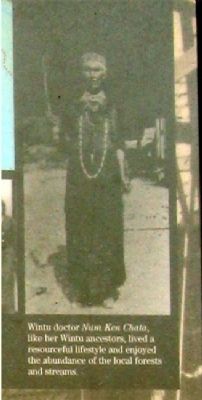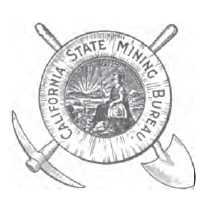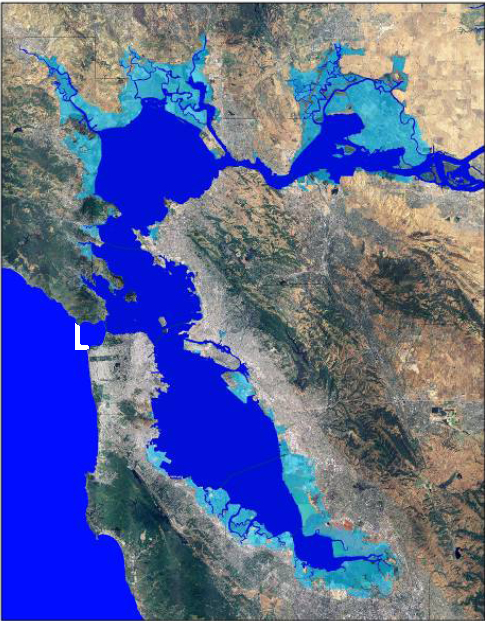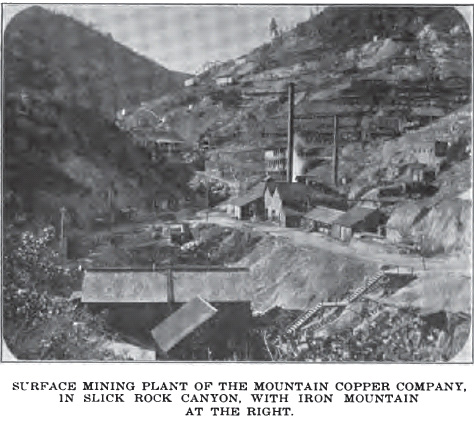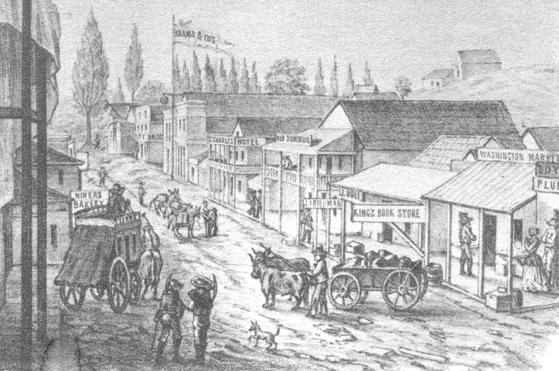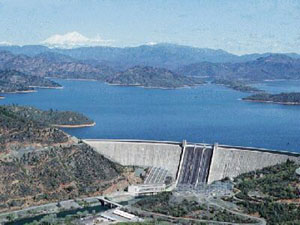MR. ARMAN: So how in the heck do you - pardon me?
How am I expected to run my business with EPA stopping me on every move that I make?
Pardon me?
THE COURT: All right. That sounds more like a
rhetorical question and one directed more towards the plaintiffs.
I don't need to hear anything further. I've made my rulings.
IS "SUMMARY JUDGMENT" PREJUDICIAL?
ARE "I THINK I'VE BEEN DISCHARGED?"
& "PARDON ME" FEDERAL QUESTIONS?
IS "ALL RIGHT" A PARDON?
Mr. Arman, you realize that Mr. Hutchens is not an attorney; correct?
MR. ARMAN: Yes, I do.
THE COURT: You recognize that he can't represent the
corporation, and he can't represent you in a court of law.
Do you understand that?
MR. ARMAN: No, I do not.
THE COURT: Do you understand, Mr. Hutchens, that --
MR. ARMAN: He's representing me, your Honor,
personally.
THE COURT: Well, you understand he's not a lawyer;
correct?
MR. ARMAN: I do know he's not a lawyer, but he should
have been one a long time ago.
Evidence that merely “presents probabilities rather than proof,” “relies upon a collection of facts that could be summarized as 'if it is there, it must be theirs,'” or is “vague and imprecise, of questionable reliability, and therefore not sufficiently probative to create an issue for trial” is insufficient to hold a party liable under CERCLA
THE FIVE REQUIRED ELEMENTS OF A LAWSUIT
A. Real Injury or Wrong.
B. Jurisdiction.
C. Statute of Limitations.
D. Immunity.
E. Facts and Evidence.
MR. CORCORAN: Your Honor, let me give you the docket
numbers. First, docket number 1261, the original notice of
joinder, that was only Mr. Hutchens. The one spot signed by
Mr. Arman included 1266 which is actually three documents.
It consists of a petition to reopen, a counterclaimants' memo
or memorandum --
THE COURT: I have that in front of me.
MR. CORCORAN: -- and an interpleader. All those were
filed I believe under single docket number of 1266. Of those
two, the petition and the interpleader, were signed by
Mr. Arman. Another was 1270 which are objections. 1269,
also objections. 1271, preconference statement. We are not
alleging that all those were not signed by Mr. Arman.
THE COURT: Say that again. Which ones?
MR. CORCORAN: There's a document that was filed this
morning by Mr. Hutchens. It was served on us last Friday,
the 15th. The title of it is "Petitioners' Preconference
Responses and Reply to Order of Honorable Judge John A.
Mendez," and then it goes on.
THE COURT: Okay.
MR. CORCORAN: That document, it has about 12 pages,
maybe 10 pages of case citations. At page 13, it begins
narrative. And in the first few paragraphs of that,
Mr. Hutchens acknowledges that he was signing Mr. Arman's
name, but he indicates that it was with various forms of
authorization.
THE COURT: Okay. For the record, Mr. Hutchens, you
are not an attorney; is that correct?
MR. HUTCHENS: That's correct.
THE COURT: Okay.
MR. CORCORAN: The subsequent filings by Mr. Hutchens
and Mr. Arman collectively I think evidence his presumption
of having joined or intervened in this case.
THE COURT: They do. Mr. Corcoran, give me the docket
number again.
MR. CORCORAN: Your Honor, it's docket 1261.
THE COURT: Okay.
MR. CORCORAN: The date is March 10th that it was filed.
THE COURT: Got it.
MR. CORCORAN: Excuse me. It was entered on
March 11th. It was dated March 10th.
THE COURT: And that's the first sort of appearance
made by Mr. Hutchens; is that correct?
MR. CORCORAN: Yes. And I should add one thing, your
Honor. The plaintiffs actually received some documents that
are styled as filings that never actually appeared to end up
in the record. So we have been dealing with some additional
documents, and you should be aware that that's part of the
confusion and prejudice that we're claiming.
THE COURT: When is the first time that you got notice
that Mr. Hutchens was attempting to get involved in this
case?
MS. PADILLA: I think when he filed these pleadings
styled notice of joinder. We did file an opposition jointly
with the United States to that.
THE COURT: Okay.
MR. CORCORAN: Your Honor, if I could add one thing
about his involvement. In the various filings we've seen,
his claim of authority derives from two sources. One is a
joint venture which he has never produced and never
evidenced. But the other is a power of attorney which we do
have. I believe if I'm recalling correctly, and I can check
if you'd like, that that was dated March 13th of this year, 2008.
To demonstrate injury in fact, a plaintiff "must show that [it] is under threat of suffering `injury in fact' that is concrete and particularized" and "actual and imminent, not conjectural or hypothetical." Summers v. Earth Island Inst., 129 S.Ct. 1142 , 1149 (2009). Put another way, "Art[icle] III requires the party who invokes the court's authority to `show that he personally has suffered some actual or threatened injury as a result of the putatively illegal conduct of the defendant.'" Valley Forge Christian Coll. v. Ams. United for Separation of Church & State, Inc., 454 U.S. 464 , 472 (1982) (quoting Gladstone, Realtors v. Vill. of Bellwood, 441 U.S. 91 , 99 (1979)) (emphasis added). If the plaintiff is not the target of the challenged government action or inaction, "standing is not precluded, but it is ordinarily `substantially more difficult' to establish." Lujan, 504 U.S. at 562 (quoting Allen v. Wright, 468 U.S. 737 , 758 (1984)). U.S. v. CITY OF ARCATA No. 09-16780.
"[F]ederal jurisdiction exists only when a federal question is presented on the face of a properly pleaded complaint." JustMed, Inc. v. Byce, 600 F.3d 1118 , 1124 (9th Cir. 2010) (internal quotation marks omitted). The mere existence of a federal defense to a state law claim is insufficient to create federal jurisdiction over a case. Louisville & Nat'l R.R. v. Mottley, 211 U.S. 149 , 152 (1908).
The district court also had federal question jurisdiction over the case pursuant to 28 U.S.C. § 1331, which provides the district courts with "original jurisdiction of all civil actions arising under the Constitution, laws, or treaties of the United States ." The government's complaint posed a federal question in its own right because it sought invalidation of the ordinances under federal law. See Shaw v. Delta Air Lines, Inc., 463 U.S. 85 , 96 n.14 (1983).
The Constitution expressly provides Congress with the power to "raise and support Armies" and to "make Rules for the Government and Regulation of the land and naval Forces." U.S. Const. art. I, § 8, cls. 12, 14. And the Supreme Court has made clear that the federal government "can determine, without question from any State authority, how the armies shall be raised." Perpich v. Dep't of Def., 496 U.S. 334 , 353 n.27 (1990) (quoting Tarble's Case, 80 U.S. (13 Wall.) 397, 408 (1872)); see also New York v. United States , 505 U.S. 144 , 156 1992) ("If a power is delegated to Congress in the Constitution, the Tenth Amendment expressly disclaims any reservation of that power to the States . . . ."). U.S. v. CITY OF ARCATA No. 09-16780. United States Court of Appeals, Ninth Circuit. Submitted November 4, 2010 * San Francisco , California . Filed December 17, 2010.
TO: Members of the 112 th Congress
Committee Staff Directors and Counsels; Member Staff
FR: Speaker-Designate Boehner, Majority Leader-Elect Eric Cantor, Rules Committee Chairman-Elect David Dreier, Transition Team Chairman Greg Walden
DT: December 17, 2010
RE: New Constitutional Authority Requirement for Legislation
The new rule will be a new paragraph of clause 7 of rule XII:
"(c) A bill or joint resolution may not be introduced unless the sponsor has submitted for printing in the Congressional Record a statement citing as specifically as practicable the power or powers granted to Congress in the Constitution to enact the bill or joint resolution. The statement shall appear in a portion of the Record designated for that purpose and be made publicly available in electronic form by the Clerk.”
CERCLA's BFPP Protections in Question
In what might be considered one of the most important superfund cases of the year, a federal district court for the first time has interpreted the requirements for the bona fide prospective purchaser defense and found several were not met, a New York City attorney told BNA Dec. 7. Referring to the decision in Ashley II of Charleston LLC v. PCS Nitrogen Inc. (D.S.C., No. 2:05-cv-2782, 9/30/10), Lawrence Schnapf, principal of Schnapf Environmental Law Offices, said the decision, which for the first time scrutinized the appropriate care requirement, has widespread implications for whether the self-implementing nature of the bona fide prospective purchaser (BFPP) defense is sufficient for liability protection under the federal superfund law. "After the 2002 amendments to CERCLA, EPA basically took the position that it was getting out of the prospective purchaser agreement business because the BFPP was self-implementing.
Reported in BNA's Environmental Due Diligence Memo on December 15th, this case raises questions about the reliability of the statute's landowner protections," Schnapf said. The case stems from a Comprehensive Environmental Response, Compensation, and Liability Act (CERCLA) action to recover costs incurred to remediate approximately 34 acres of land in Charleston , S.C. , with contamination related to the historic operations of a fertilizer manufacturing plant. Ashley II had purchased the site for redevelopment. It argued it was not liable for the contamination because it was a protected by CERCLA's BFPP defense. The court disagreed and found Ashley responsible for 5 percent of the allocated cleanup costs.
Environmental Bankers Association (EBA) is a non-profit trade association that represents the financial services industry, including bank and non-bank financial institutions, insurers, asset management firms and those who provide services to them. Its members include lending institutions, property & casualty and life insurers, the environmental consulting and appraisal community, and attorneys. The EBA was established in 1994 in response to heightened sensitivity to environmental risk issues, and the need for environmental risk management, sustainable development, and due diligence policies and procedures in financial institutions.
Membership in the EBA is not limited to financial institutions. Currently, our membership includes property & casualty insurers and brokers, environmental consultants, appraisers and environmental information management firms, and environmental, real estate and trust attorneys in addition to the financial sector.
The EBA meets formally twice a year at a location hosted by one of its members. The meetings provide not only a forum to promote the exchange of environmental risk management and sustainable development lending information and technical expertise but also provides the opportunity for our members to network.
Committee Descriptions
PRESIDENT & Policy
Beth Gray
Wachovia Bank
beth.gray1@wachovia.com
VICE PRESIDENT & Programs
Rick Ferguson
U.S. Bank
Richardr.ferguson@usbank.com
SECRETARY & Communication
Rick Plewa
Comerica Bank
rjplewa@comerica.com
TREASUrer & Finance
Steven Katzenstein
National City Bank
steven.katzenstein@nationalcity.com
Risk Management
Dennis P. Firestone
Wells Fargo Bank
dennis.p.firestone@wellsfargo.com
Technical Development
Georgina Dannatt
Bank of the West
georgina.dannatt@bankofthewest.com
Business Development
Global Issues
Jennifer Farley
Wells Fargo
Jennifer.f.farley@wellsfargo.com
Trust Issues
Glenn R. Brown
JP Morgan/Chase
glenn.brown@jpmorgan.com
Legal & ASTM
J. Scott Beckerman
Comerica Bank
jsberckerman@comerica.com
General Counsel
Dan Richardson
Lewis, Longman & Walker, P.A.
drichardson@llw-law.com
Executive Co-director
D. Jeff Telego
Environmental Bankers Association
jefftelego@envirobank.org
Executive co-director
Tacy Telego
Environmental Bankers Association
Tacytelego@envirobank.org
THE COURT: Okay. Mr. Arman, you are a party to this
case. Is there anything you want to say?
MR. ARMAN: Yes, your Honor.
THE COURT: Go ahead.
MR. ARMAN: If I'm permitted.
THE COURT: You are permitted.
MR. ARMAN: I'd like to raise a complaint.
THE COURT: Go ahead.
MR. ARMAN: I've been restricted from using my
property since March of last year. I have to go through two
gates. I have to get permission to go through these gates.
I have to -- I am monitored over 30 different locations on my
property. And if I'm not reported in, there is some record
kept of that. I can't use my property. I can't use it. I
cannot enjoy it. I cannot spend a weekend up there. I've
had different contractors help me on different projects.
They have to be off the property at 3:00 o'clock. They
cannot come up there on a weekend. It is a total absolute
disaster of owning a property, a beautiful property like Iron
Mountain Mines, and I cannot use it because the people
sitting right over there are keeping me from using it. And I
think that that is terrible. And I'd like to have you know
this, that I am being treated horribly as an owner of
property, and I asked -- I have lawyers, and I asked one of
them, he said well, Ted, they're just penalizing you. The
whole issue is penalizing you. Penalizing me over some
incident that occurred back in March where this group, AIG,
and that group are utilizing all of my buildings and they're
not paying me any rent. And I figured anything that's left
in my buildings belongs to me, and I will treat it that way.
And there's so many other issues,
THE COURT: Okay. Mr. Arman, go ahead.
MR. ARMAN: Yes, your Honor. The government put a
lien on my property which makes it almost impossible for me
to raise money. I've had all kinds of opportunities for
money to come in, but that lien is blocking it. And,
secondly, we have enough projects going up there to where we
could make enough money to pay off anything that we need to
pay off, and yet EPA interferes with my business where I
cannot operate. And some of the people are sitting right
here who are doing that interference.
WORLDS LARGEST PRIVATE HYDROPOWER - PUMP STORAGE PROJECT
BRICK FLAT OPEN PIT GENERAL MINING PLAN
White House issues scientific integrity memo
Guidelines are intended to help increase public trust in science
President Obama's science and technology advisor issued a memo to federal science agencies Friday to guide them in making rules to ensure scientific integrity.
The memo, which applies to executive branch departments and agencies such as the Department of Agriculture and the National Science Foundation, is “several steps in the right direction,” said Al Teich, the director of science policy at the American Association for the Advancement of Science (AAAS).
Director of the White House Office of Science and Technology Policy John Holdren sent out the guidelines after a March 2009 memo by Obama emphasized the need for public trust in science. In that memo, Obama highlighted principles of scientific integrity that he said would be at the core of his administration's approach to science policy.
New guidelines
The new memo is meant to provide further guidance to the heads of federal scientific departments and agencies, the White House announced Friday.
Scientific integrity in government. The memo outlines guidelines for open communication among federal scientists and the public, including making data available online.?
Public communications. Agencies are required to offer “articulate and knowledgeable” spokespersons to explain scientific findings to the media and public. The memo requires that agencies put mechanisms in place to resolve disputes about decisions to proceed with or refuse media interviews.
Federal advisory committees. These committees, or FACs, are tasked with providing scientific advice for policy decisions. The memo requires transparency in recruiting committee members. It also requires that any conflict of interest information be publicly available. Finally, agencies are to be prohibited from revising committee recommendations, protecting the independence of FACs.
Professional development for federal scientists. Agencies and departments must encourage scientists to publish and present freely. Scientists should also be allowed to participate in professional enrichment activities like sitting on journal editorial boards.
Some of the changes are significant, said AAAS's Teich, including a rule that federal scientists must put their results into context by highlighting uncertainties and including best- and worse-case scenarios. [Read: White House Wonders if Climate Will Be Hostage to Politics ]
“There's a natural tendency on the part of people to want to put their research results in the most favorable light,” Teich told LiveScience. The requirements will force federal researchers to “take a different perspective, and a much more open and balanced perspective, if in fact it's implemented the way it's written,” Teich said.
In the memo, Holdren gave department and agency heads 120 days to report their progress in setting rules to meet the guidelines.
“All in all, we're pleased, but the word ‘appropriate' appears a half a dozen times in this document, and that means there's a lot of discretion for these agencies as to how they implement it,” Teich said, adding, “They've talked the talk, now we'll see if they walk the walk, and we hope they do.”
Politics and scienceThese guidelines may help prevent situations where political ideology interferes with the communication of scientific information, according to Neal Lane , a professor of public policy at Rice University . These incidents included the editing of an Environmental Protection Agency report to the point where it glossed over the risks of climate change .
“Those are the kinds of things that should not ever happen in any administration, whatever the party is,” he told LiveScience. “These agencies are large complex organizations with many layers and sometimes you can find people who don't know the science in a position to influence what the agency puts out about the science.”
Hopefully, these guidelines will prevent this from happening in the future, according to Lane.
Wendy Wagner, a professor at the University of Texas School of Law and a member scholar at the Center for Progressive reform had some reservations about the lack of guidance in the memo for how agencies should use non-federal science data in setting regulations.
“On the whole, however, the new policy is an important step forward,” Wagner said in a statement. “Hopefully it will be followed by many more positive directives on science-policy in the not too distant future.”
Michael McPhaden, president of the American Geophysical Union and a National Oceanic and Atmospheric Adminsitration scientist, lauded the guidelines emphasis on peer review, transparency, and the lifting of restrictions on government scientists' activities in professional societies.
“This is really a revolutionary document,” McPhaden told LiveScience.
LiveScience Senior Writer Wynne Parry contributed reporting to this article.
A Watershed Moment for the Clean Water Act
(1) Looking 20 years ahead, what systemic risks will the emergency management community face?
(2) What transformational events could shape emergency management's future?
(3) What should the emergency management community be doing now to have the right future capacity and capabilities to serve those who depend on us?
The Fifth Circuit erred in according absolute priority to the subject-matter jurisdiction requirement on the ground that it is nonwaivable and delimits federal-court power, while restrictions on a court's jurisdiction over the person are waivable and protect individual rights. Although the character of the two jurisdictional bedrocks unquestionably differs, the distinctions do not mean that subject-matter jurisdiction is ever and always the more “fundamental.” Personal jurisdiction, too, is an essential element of district court jurisdiction, without which the court is powerless to proceed to an adjudication. Employers Reinsurance Corp. v. Bryant, 299 U.S. 374 , 382. In this case, indeed, the impediment to subject-matter jurisdiction on which Marathon relies–lack of complete diversity–rests on statutory interpretation, not constitutional command. Marathon joined an alien plaintiff (Norge) as well as an alien defendant (Ruhrgas). If the joinder of Norge is legitimate, the complete diversity required by §1332, but not by Article III of the Constitution, see State Farm Fire & Casualty Co. v. Tashire, 386 U.S. 523 , 530—531, is absent. In contrast, Ruhrgas relies on the constitutional due process safeguard to stop the court from proceeding to the merits of the case. See Insurance Corp. of Ireland v. Compagnie des Bauxites de Guinee, 456 U.S. 694 , 702. The Steel Co. jurisdiction-before-merits principle does not dictate a sequencing of jurisdictional issues. A court that dismisses for want of personal jurisdiction, without first ruling on subject-matter jurisdiction, makes no assumption of law-declaring power that violates the separation of powers principles underlying Steel Co. Pp. 8—10. RUHRGAS AG v. MARATHON OIL
In most instances, subject-matter jurisdiction will involve no arduous inquiry, and both expedition and sensitivity to state courts' coequal stature should impel the federal court to dispose of that issue first. Where, as here, however, a district court has before it a straightforward personal jurisdiction issue presenting no complex state-law question, and the alleged defect in subject-matter jurisdiction raises a difficult and novel question, the court does not abuse its discretion by turning directly to personal jurisdiction.
145 F.3d 211, reversed and remanded.
Ginsburg, J., delivered the opinion for a unanimous Court.
EX PARTE APPLICATION FOR ORDER CONTINUING HEARING DATE ON THE UNITED STATES' MOTION FOR PARTIAL SUMMARY JUDGMENT AND MEMORANDUM IN SUPPORT THEREOF
ADMISSION OF ADMINISTRATIVE RECORD - CERTIFICATE OF APPEAL
The ongoing environmental calamity at Iron Mountain Mine has created new major and modified existing stationary sources that would require air permits prior to beginning emissions that becomes an enforceable part of the new process for determining the required emission control technology - criteria pollutants such as sulfur dioxide, nitrogen dioxide, carbon dioxide, carbon monoxide, particulate and volatile organic compounds exceed a “significance” threshold, the permittee is required to analyze available and technically feasible control technology with the goal of selecting the best available control technology (BACT) for new or modified emissions.
PHYEW! I BEG YOUR PARDON.
CERCLA EPCRA Administrative Reporting Exemption For Air Releases
Travelin' in Time: Iron Mountain has rich history
Ah ... the good old days
A major health and environmental hazard because of the huge volumes of poisonous sulphurous dioxide gases released into the air. The company made token attempts to prevent the spread of the poisonous gases, resulting in Superior Court lawsuits that closed the smelter by court order in 1907. ...
No one lives on the mountain today. There is only one remaining privately owned piece of property on the mountain — Iron Mountain Mine, and that is owned by Ted Arman. All the rest of the mountain property is owned by an agency of the federal government — the Bureau of Reclamation, the U.S. Forest Service, or the Department of Reclamation.
Iron Mountains Mines, Inc. purchased the property in 1976. In 1983, Iron Mountain Mine was placed on the Environmental Protection Agency's National Priority List, making it eligible as a Superfund cleanup site. Cleanup investigative work by the federal government began that year.
General Docket
United States Court of Appeals for the Ninth Circuit
Court of Appeals Docket #: 09-17411
Docketed: 10/29/2009
Nature of Suit: 1893 Environmental Matters
USA , et al v. T.W. Arman, et al
Appeal From: U.S. District Court for Eastern California, Sacramento
Fee Status: Paid
Case Type Information:
1) civil
2) united states
3) null
Originating Court Information:
District: 0972-2 : 2:91-cv-00768-JAM-JFM
Court Reporter: Kelly Ann O'Halloran
Trial Judge: John A. Mendez, District Judge
Date Filed: 06/12/1991
Date Order/Judgment:
Date Order/Judgment EOD:
Date NOA Filed:
Date Rec'd COA:
09/29/2009
09/29/2009
10/23/2009
10/29/2009
06/30/2010
19
Filed (ECF) Appellee State of California Correspondence: Letter to Clerk. Date of service: 06/30/2010 [7389577] (MP)
07/23/2010
21
Submitted (ECF) Answering brief for review. Submitted by Appellee USA . Date of service: 07/23/2010. [7415725] (JMP)
07/26/2010
22
Filed clerk order: The answering brief [ 21 ] submitted by USA is filed. Within 7 days of the filing of this order, filer is ordered to file 7 copies of the brief in paper format, with a red cover, accompanied by certification, attached to the end of each copy of the brief, that the brief is identical to the version submitted electronically. [7417446] (WP)
07/26/2010
23
Filed Appellee USA excerpts of record in 1 volume. Served on 07/23/2010. [7417457] (WP)
07/29/2010
24
Received 7 paper copies of Answering brief [ 21 ] filed by USA . [7422418] (SD)
08/05/2010
25
Oral extension of time granted to appellants T. W. Arman, William A. Logan, Jr. and Logan & Giles LLP. The reply brief is due 8/23/2010. [7435466] (LB)
08/23/2010
26
Submitted (ECF) Reply brief for review. Submitted by Appellants William A. Logan, Jr. and Logan & Giles LLP. Date of service: 08/23/2010. [7449230] (WAL)
08/24/2010
27
Filed clerk order: The reply brief [ 26 ] submitted by William A. Logan , Jr. and Logan & Giles LLP is filed. Within 7 days of the filing of this order, filer is ordered to file 7 copies of the brief in paper format, with a gray cover, accompanied by certification, attached to the end of each copy of the brief, that the brief is identical to the version submitted electronically. [7450466] (WP)
08/26/2010
28
Received 7 paper copies of Reply brief [ 26 ] filed by William A. Logan, Jr.. [7454559] (SD)
12/14/2010
29
Filed order MOATT: (EC) The court has received the June 9, 2010 filing of John F. Hutchens. Because Mr. Hutchens in not a party to this appeal, the Clerk shall return the June 9, 2010 filing to him. No further submissions made by Mr. Hutchens in this appeal shall be addressed by the court. Principal briefing is complete. [7580049] (KD)
NEWS FROM TED ARMAN - RECENT NOTICE -COURT FILING
The last reforestation was attempted on the mountain after World War II to replace the trees that had been killed from the smelter fumes. Even though 2.6 million seedlings were planted, the acidic soil and slope instability rendered the project a failure. Nature had largely healed itself since then until the Motion fires 2 years ago destroyed thousands of acres.
Now we have irrigation available, we should try again.
The cartel "is the most pervasive and harmful criminal antitrust conspiracy ever uncovered," declared Joel Klein, chief of the Justice Department's antitrust division. The price-fixing ring "hurt the pocketbook of virtually every American consumer, anyone who took a vitamin, drank a glass of milk, or had a bowl of cereal," he said.
Fulfilling the Promise of Earth Day (continued)
MEETING THE CHALLENGE Today, Superfund is more flexible, more effective, more sensible, and more affordable -- seeking to achieve the best environmental results for the least cost.
But the proof of Superfund's success is found in our backyards.
500,000 TONS READY & WAITING IN THE BRICK FLAT PIT
Because of innovative thinking and flexibility, a site that was once the subject of community unrest has been transformed into a center of community pride. When the Federal government settled with the PRPs ..., two Trusts were formed... current and former landowners. The Trusts facilitated the cleanup of the site and its eventual redevelopment.
CONTACT: Dale Kemery (News Media Only) kemery.dale@epa.gov 202-564-7839 202-564-4355
FOR IMMEDIATE RELEASE
December 21, 2010
EPA Forms New Group to Increase Tribes' Role in Chemical Management and Pollution Prevention Activities
WASHINGTON – The U.S. Environmental Protection Agency is forming a new tribal committee to provide tribes with an opportunity for greater input on issues related to toxic chemicals and pollution prevention. The move is part of Administrator Lisa P. Jackson's priority to build strong tribal partnerships and expand the conversation on environmental justice.
EPA is establishing a National Tribal Toxics Committee (NTTC) that will give tribes a forum for providing advice on the development of EPA's chemical management and pollution prevention programs that affect tribes. Given the uniqueness of tribal cultures, communities and environmental problems, the forum will help EPA better tailor and more efficiently address a variety of issues, including preventing poisoning from lead paint, expanding pollution prevention and safer chemical initiatives in Indian country, and better evaluating unique chemical exposures on tribal lands.
“This new committee will help increase our already close collaboration and communication with federally recognized tribes and intertribal organizations on critical issues relating to chemical safety and pollution prevention that affect Native peoples,” said Steve Owens, assistant administrator for EPA's Office of Chemical Safety and Pollution Prevention. “We are committed to reducing toxic exposures and increasing pollution prevention among tribal communities, and to respecting tribal sovereignty, culture and heritage.”
A charter for the new NTTC is being developed and the membership of the council will be formed over the next several months. The first meeting of the NTTC will be held in the spring of 2011.
More information: http://www.epa.gov/oppt/tribal /
More information on EPA's partnership with tribes: http://www.epa.gov/indian /
Note: If a link above doesn't work, please copy and paste the URL into a browser.
View all news releases related to pesticides and toxic chemicals
1892 Illinois Central Railroad v. Illinois , 146 U.S. 387 (1892) established the scope of the public trust doctrine in America . The issue was whether the Illinois legislature could grant nearly the entire waterfront area of Chicago to the Illinois Central Railroad. The Supreme Court of the United States held that Illinois had title to the land underneath the navigable waters of Lake Michigan and that it held this title in trust for the public's use. Illinois was not allowed to convey this land if the effect would be to destroy the public's right of navigation and fishing. However, the Court also held that Illinois could convey parcels of trust land to private individuals so long as the overall effect was to improve the public's ability to exercise its trust rights. The conveyance to Illinois Central did not meet this criterion and was therefore void.
1926 December 24: California Supreme Court rules in Herminghaus v. Southern California Edison that riparian water right holders are not bound by existing California law to use water reasonably with respect to appropriative water right holders.
The decision proves controversial throughout California .
July 30: California Department of Finance files water rights applications for 7.3 million acre-feet of water rights on the Feather River and in the Delta, as well as millions more on many other rivers and streams throughout the Central Valley watershed in anticipation of design and construction of statewide water systems. The states requested water rights exceed by many times the amount of annual runoff in the rivers subject to the state's applications.
1928 November: California voters pass Proposition 7, a constitutional amendment banning waste and unreasonable use, and unreasonable methods of diversion of water statewide by nearly a 4-to-1 margin. The constitutional amendment requires that all uses and diversions, and methods of diversions of water in California must be reasonable, including riparian rights, thereby addressing the issues raised by Herminghaus .
1933 December: California voters narrowly pass the Central Valley Project Act by a margin of 33,603 votes statewide, authorizing the state to build its first coordinated water system. Because of the Great Depression, the state could not finance the project, however.
1928 -
1934
First lengthy statewide drought of the 20th century results in runoff from all rivers and streams tributary to the Delta that was less than 60 percent of average conditions.
1937 US Bureau of Reclamation takes over ownership, design, construction, and operation of the Central Valley Project from the state of California .
1940s Shasta Dam completed on upper Sacramento River in 1944; Friant Dam completed on upper San Joaquin River in 1949.
On the San Joaquin River , fall-run Chinook salmon go extinct in late 1940s and spring-run Chinook salmon go extinct in early 1950s.
1969 · Clean Water - - The Porter-Cologne Water Quality Control Act is adopted as one of the nation's strongest anti-pollution laws and becomes a model for the federal Clean Water Act of 1972.
1977 · Alternative Energy -- Governor Brown and the Legislature enact the nation's largest tax-incentive program for encouraging development of solar energy. The following year, the state sets a goal of meeting 10 percent of its electrical needs with wind power by the year 2000.
1986 May: Appellate Judge John Racanelli issues the first public trust and water quality planning decision on the Delta cases originally filed in 1978, United States v. State Water Resources Control Board . California Supreme Court declines to hear the case on appeal in July, letting Judge Racanelli's decision stand. Racanelli stated that the State Water Resources Control Board must take a global view of the Delta and Sacramento and San Joaquin River tributary watersheds, and must by law protect beneficial uses of water (including fish and wildlife) not merely water rights.
1988 California Legislature adopts the Salmon, Steelhead Trout, and Anadromous Fisheries Program Act , setting as state policy a goal to double the production of salmon and steelhead fish in California .
October: After more than a year of evidentiary hearings into public trust resource and water supply issues, State Water Resources Control Board issues Draft Bay-Delta WQCP calling for a new “water ethic,” new flow objectives for Delta channels, and pre-State Water Project export rates [but split between Central Valley Project and State Water Project pumps] as a “reasonable interim goal until a safe level of exports is found.” After water contractors strenuously object to the draft plan, it is withdrawn.
1914 Tax Exemption for Universities -- Nonprofit colleges and universities are exempted from property taxation. (Constitutional amendment, proposed by the Legislature, approved by 53 percent of voters.) A 100-acre cap on their tax-exempt property is expanded in 1962 to include all lands used for higher education.
1995 · Incompetent Judges --Voters endorse a constitutional amendment offered by the Legislature to permit greater public oversight in disciplining corrupt, biased or incompetent judges. The Commission on Judicial Performance is given authority to remove or censure judges and its disciplinary hearings will be open to the public. (Approved by 63.7 percent of voters.)
Its an awfully long time since
Christmas on Iron Mountain
Present
No one lives on the mountain today and all of the mines have ceased to operate. A massive ore body still exists inside the mountain and instead of mining the ore, people are now employed by the federal government to clean up the massive amount of [non] toxic materials created by the earlier mining.
CALIFORNIA WATER RIGHTS PRIMER
Sub specie mali : The stream of thought flows on; but most of its segments fall into the bottomless abyss of oblivion. Of some, no memory survives the instant of their passage. Of others, it is confined to a few moments, hours or days. Others, again, leave vestiges which are indestructible, and by means of which they may be recalled as long as life endures. -William James
what is fear, saith Solomon, but a betraying of the succours that reason offereth
Deo, Patriae, Tibi.
About Us | Site Map | Privacy Policy | Contact Us | ©2010 Artesian Mineral Development & Consolidated Sludge, Inc.






